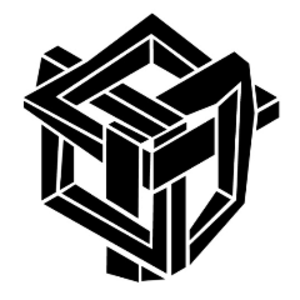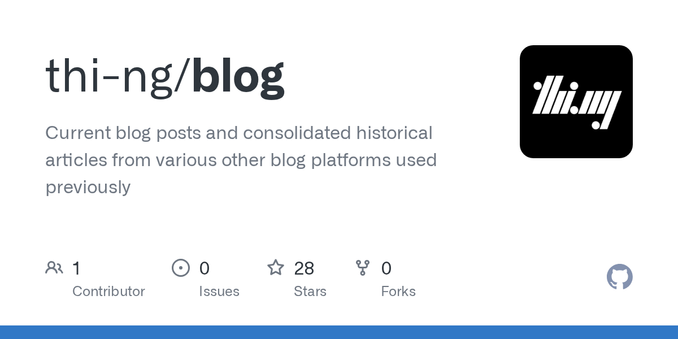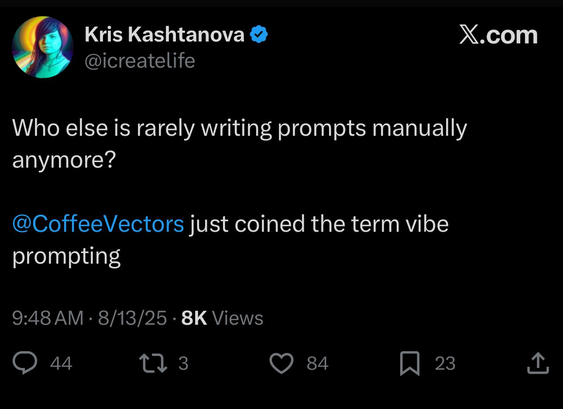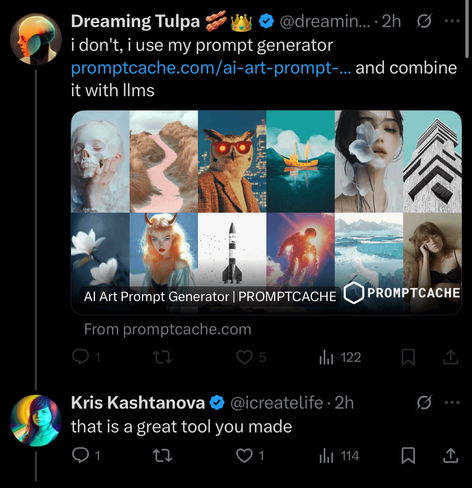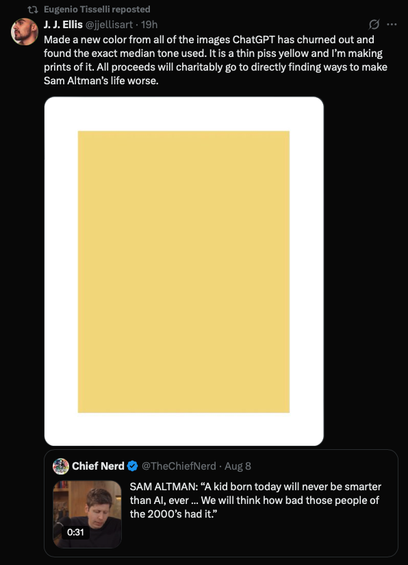@atomless @jamesbridle
tl;dr This topic of language re-appropriation is something I seemingly return to at least once a year (esp. since the LLM hype started), but practioners like myself have been pushed into a situation where we have to re-invent new language/terminology which clearly delineates our existing practices from the now co-opted, distorted & poisened versions/meanings of the terms we used hitherto...
(Update: edited for clarity & typos)
I have a very similar visceral negative reaction to this type of "generative" slop as you do, but I too spent my past 25+ years working in generative/procedural/algorithmic design & art, using it for many different applications (from architecture to installations, graphic design, interaction design, music composition...) and creating a vast amount of tooling on the way and teaching people how to create and harness the potential of generative approaches. Generative is focused on processes rather than products. None of these had necessarily to do with LLMs and "generative" was conceptually much closer to emergence, autonomy and complexity theory. Machine learning, and what we're calling "AI" now, is just a tiny sub-field, but a generative approach doesn't even require computers[1][2].
From this POV, the current media framing of the term "generative" (AI) is a complete polar opposite and much closer to what we called "generated" some years ago. It all got muddled/morphed even more by absorbing several negative connotations from the inversion of human/machine control, the lack of ethics/care/consideration/legality and the many other negatives involved in the entire modern LLM tech stack (across the full spectrum from purely conceptual to implementation details).
Before LLMs absorbed ownership of "generative", the word referred to techniques, processes, approaches, exhibiting a level of autonomous aspects/behaviors which could be captured in some form. For many techniques in this field, randomness and non-determinism plays a fundamental part, but often is more used as tool to explore (or document) the often vast design/parameter/opportunity space of that process. Generative design/art is a wonderful sandbox to explore and observe complexity, emergence, define/refine parameters, constraints and rules of interactions. From early on, I found it intellectual cultivating and the main reason why I got into computer science, software engineering and creating my own tools, because that way I could freely define & combine these processes, learn about them, figure out how to re-use them and in which situations. The difference between "generative" and "generated" was a process which has certain properties vs. something being merely the output from such a process, mass-produced. Most generative processes do indeed have the potential for a multitude of outcomes/outputs, therefore human curation was an absolute key skill/principle to adapt and (for many of us) was a core part of the iterative creation cycle. This part is even more true (and much more challenging) for LLM users...
Unlike the ultra-reductionist AI textbox prompt as "universal UI", removing pretty much any form of decent direct human control over the generative aspects of the process, most "classic" generative design tools have been embracing all the inherent complexity and nuances, focus on deep interactive human control and feedback cycles of these processes, either via UI or through direct code/param manipulation (if we're talking about computational generative work). So, also from an HCI POV, LLMs have been undoing/ignoring so much of previous hard-earned progress/research and it's just another aspect of the ongoing imposed human ⭤ machine ⭤ corporation power structure inversion...
[1] https://github.com/thi-ng/blog/blob/main/2022/20221204-personal-considerations.md
[2] https://conditionaldesign.org/archive/
(Also posted on my blog: https://github.com/thi-ng/blog/blob/main/2025/20250815-generative-vs-generative.md)

